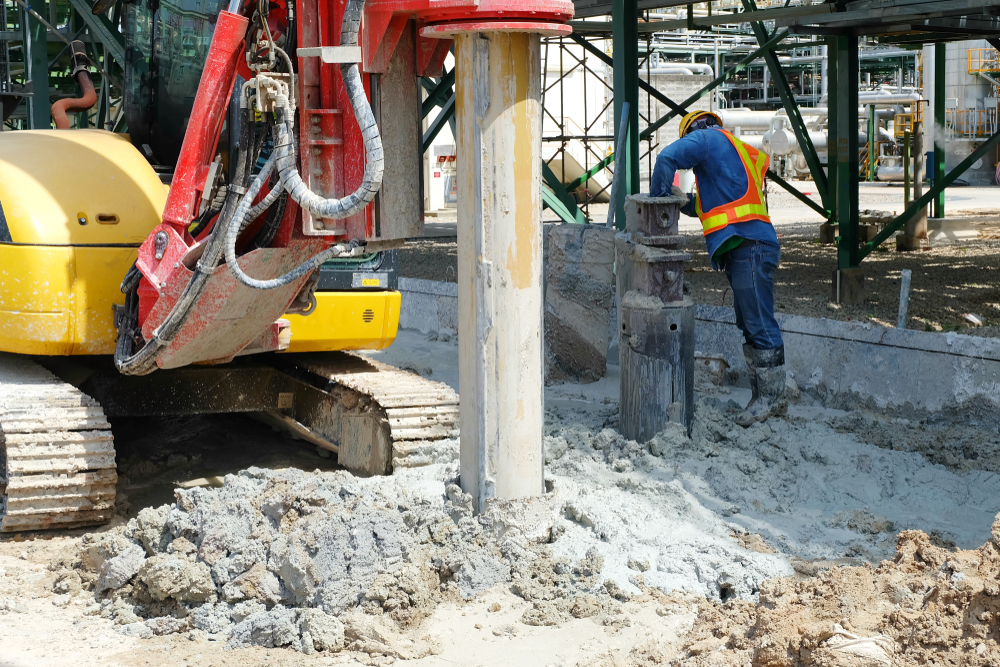Not known Details About Geotechnical Engineering Services South Africa
Getting My Geotechnical Engineering Services South Africa To Work
Table of ContentsGet This Report about Geotechnical Engineering Services South AfricaSome Known Incorrect Statements About Geotechnical Engineering Services South Africa Geotechnical Engineering Services South Africa Things To Know Before You BuySome Known Incorrect Statements About Geotechnical Engineering Services South Africa Examine This Report on Geotechnical Engineering Services South Africa
Nevertheless, rates of pay typically boost as your understanding and abilities grow, with standards indicating a graduate beginning income of in between 18,000 and 28,000 each year in the UK. This climbs to 26,000 to 36,000 with a few years of experience and then reaching 40,000 to 60,000+ for elderly, legal or master engineers.Nevertheless, with the appropriate application it is possible to understand the occupation and gain access to a difficult yet rewarding and important profession. A rock hound would need to re-train to end up being a geotechnical designer, although there is a lot of cross-over between the two professions, which could make this easier. Geologists require to have an understanding of dirts, rocks and various other products from a scientific point of view, while geotechnical engineers tale their understanding of issues such as dirt and rock mechanic, geophysics and hydrology and apply them to engineering and ecological projects.
When starting, these engineers will certainly have a tendency to work with less complicated projects, developing knowledge and experience prepared for even more challenging job later. Geotechnical engineers often tend to specialise in specific areas as they grow in experience, focusing on certain facilities such as trains, roads or water. These engineers additionally collaborate with renewable energy, offshore and onshore oil and gas, nuclear power, and a lot more.
The time taken to become a geotechnical engineer depends on where you are based, where you study and what level of education and learning you want to attain before getting in the workplace. Geotechnical Engineering Services South Africa. Generally-speaking it takes 3-4 years to reach the standard demands to start a career as a geotechnical designer.
What Does Geotechnical Engineering Services South Africa Do?
This short article will certainly highlight 3 crucial components that make geotechnical consultants required for any type of building job. In significance, geotechnical engineers are liable for the assessment of the ground and soil problems in concern.
All land subsidence and all-natural danger mitigation techniques/tests are used to explore the surface overall. Geotechnical Engineering Services South Africa. The idea is to minimize the threat of accidents throughout and after the building and construction process. Without these professionals, specialists may guarantee that the structure will certainly not create distress during the building procedure. This is specifically useful in locations where the same collection or similar tools and resources require to be utilized in even more than one task.

Geotechnical Engineering Services South Africa Fundamentals Explained

In-house training and national-level qualifications are offered for job advancement. Obligations include testing asphalt, concrete, and accumulation products, in addition to keeping laboratory equipment. This duty is appropriate for those with an eager rate of interest in laboratory operations and top quality control. As the demand for geotechnical engineering specialists remains to soar, currently is an optimal time to think about a profession in this vibrant area.
Quality control (QA) comes down to having a quantifiable test outcome. There are numerous tests geotechnical designers can carry out that produce factual, clinical information, that project teams can make use of to make smart job decisions and make sure the agreement demands are being met. You can utilize a nuclear densometer to determine moisture material and thickness of soil.
Quality assurance (QC) entails visual observation by the geotechnical engineer. The engineer would observe the compaction of the dirt to guarantee it was done in conformity to agreement records. Observation of the compaction would function as the evidence, rather than an examination with a quantifiable result that was gotten by the nuclear densometer in the instance in the paragraph over.
Everything about Geotechnical Engineering Services South Africa

Keeping that borehole, you usually pierce down to a pre-determined deepness or a depth affected view website by run into subsurface problems that deviated from assumptions. If it is natural dirt through-out depth, you could presume that you will certainly likewise find generally the exact same material from within that hole in the remainder of the location you are building your framework.
Much more boreholes or various other approaches of exploration/testing (i.e. test pits, geoprobes, CPTs, etc) would certainly help you far better define you could try this out the subsurface profile, but there is constantly an opportunity that the subsurface beyond the exploration/testing areas differs significantly from what was visually observed. Undocumented manmade fill is various than all-natural dirt due to the fact that you most absolutely never ever understand what you are going to run into (e.g.
Because of the uncertainty of the undocumented fill, the majority of jobs require the elimination or improvement of the fill within the recommended building restrictions and under other lots bearing frameworks. This is because the residential or commercial properties of the undocumented fill are commonly very heterogeneous and may not be comparable as the properties come across in the exploration/test place.
See This Report on Geotechnical Engineering Services South Africa
Geotechnical engineers can utilize a system of instruments such as inclinometers, survey monitoring factors, piezometers, extensometers, or settlement plates. Inclinometers could be mounted behind an excavation support wall to measure exactly how much the wall moves due to excavation. Movement of the wall inward towards the excavation means that there could be a loss of ground behind the wall and therefore potentially settlement.